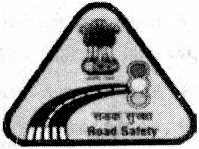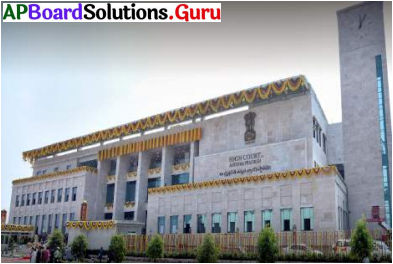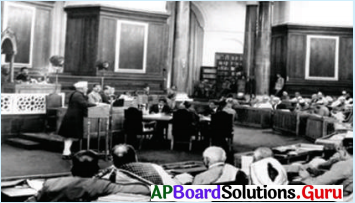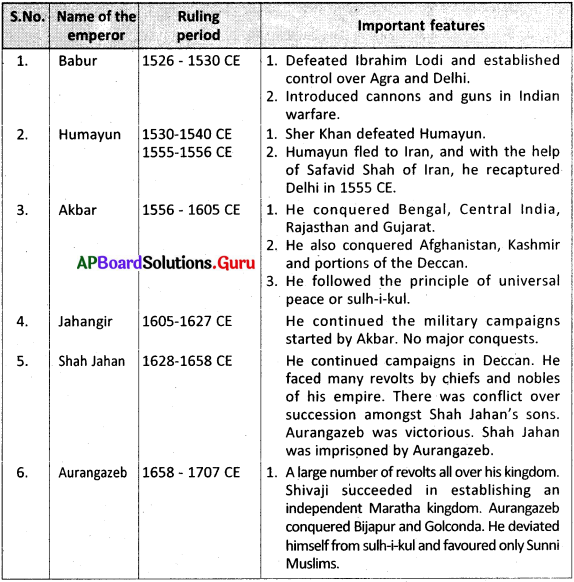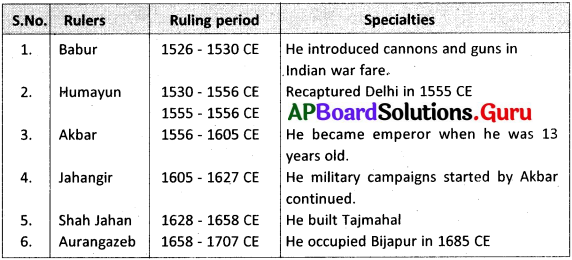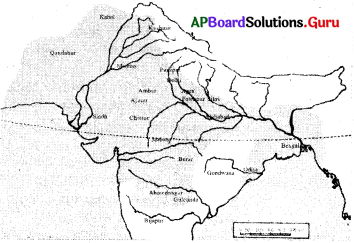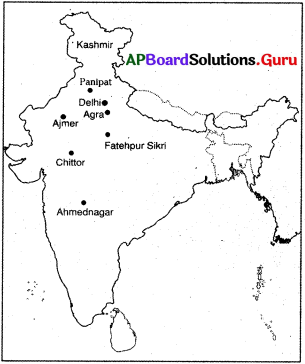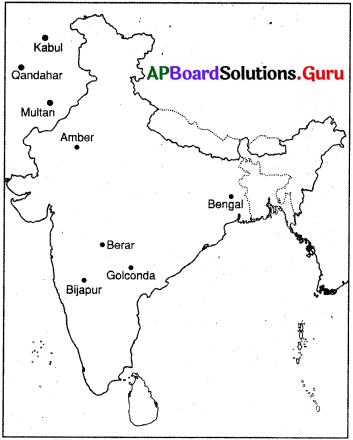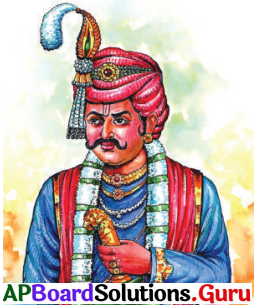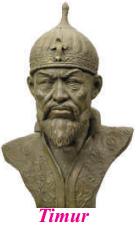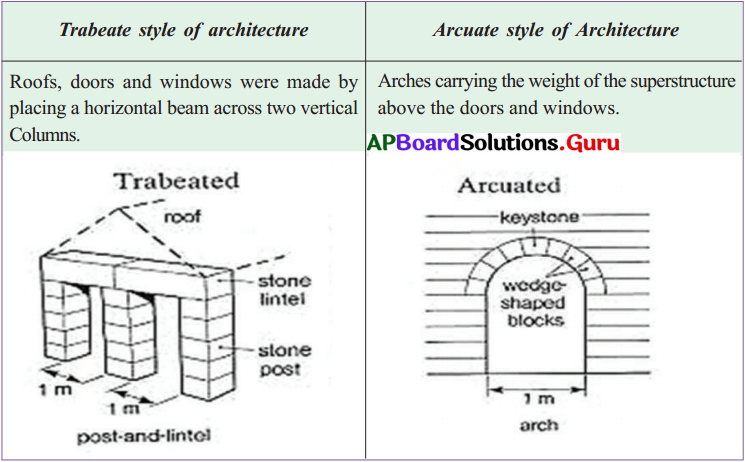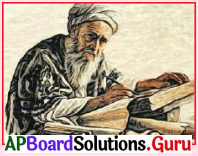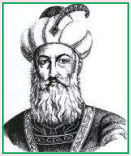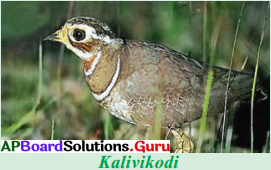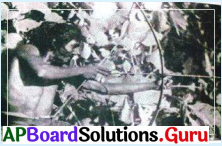These AP 7th Class Social Important Questions 12th Lesson Markets Around Us will help students prepare well for the exams.
AP Board 7th Class Social 12th Lesson Important Questions and Answers Markets Around Us
7th Class Social 12th Lesson 2 Marks Important Questions and Answers
Question 1.
What are the important sources of income?
Answer:
Salaries, wages, profits, rents, shares and dividends, etc.
Question 2.
Define physical markets.
Answer:
A physical market is a place where buyers can physically meet the sellers and purchase the desired items from them.
Question 3.
Define Local Market.
Answer:
When competition between a purchaser and a seller is localised and limited to specific area is called a local market.
Question 4.
Define Regional Markets.
Answer:
These markets cover a wider area than local markets depending upon the availability of the goods in a particular region or even a group of states or districts.
![]()
Question 5.
Define National Market.
Answer:
This is a market in which the trade for the goods and services takes place in a nation as a whole. ,
Question 6.
Define International Market.
Answer:
Trading of goods and services among different countries is known as the international Market.
Question 7.
What is meamt by weekly markets?
Answer:
In some areas markets are held on a particular day of the week. These are called weekly markets.
Question 8.
Define Rythu Bazar.
Answer:
Marginal and small scale farmers can directly sell the vegetables directly to the consumers and can get a good price for their products.
Question 9.
What is meant by Shopping Malls?
Answer:
In the Urban and Semi-urban areas, large multistoried air-conditioned buildings with shops on different floors are known as shopping malls.
Question 10.
Define Shopping Complex.
Answer:
Many shops are found in one compound in Urban areas, known as shopping complex.
Question 11.
What is meant by E – Market?
Answer:
Online platform that connect buyers and sellers through internet.
![]()
12. Define a consumer?
Answer:
A consumer is a person who buys goods or services for his personal use.
7th Class Social 12th Lesson 42 Marks Important Questions and Answers
Question 1.
Explain the types of physical markets based on the Geographical location.
Answer:
A physical market is a place where buyers can physically meet the sellers and purchase the desired items from them.
On the basis of geographical location classified as physical markets are
- Local Markets.
- Regional Markets
- National Markets
- International Markets
Question 2.
Explain the types of physical markets based on nature.
Answer:
On the basis of nature, physical markets are classified as :
- Neighbourhood Markets.
- Weekly Markets.
- Shopping Malls.
7th Class Social 12th Lesson 8 Marks Important Questions and Answers
Question 1.
What are Consumer Rights?
Answer:
Consumer Rights:
- The right to be protected against the marketing of goods, products or services which are hazardous to life and property.
- The right to be informed about the quality, quantity, potency, purity, standard and price of goods, products or services, as the case may be, so as to protect the consumer against unfair trade practices.
- The right to be assured, wherever possible, access to a variety of goods, products or services at competitive prices.
- The right to be heard and to be assured that consumers interests will receive due consideration at appropriate fora.
- The right to seek redressal against unfair trade practice or restrictive trade practices or unscrupulous exploitation of consumers.
- The right to consumer awareness.
AP Board 7th Class Social 12th Lesson 1 Mark Bits Questions and Answers Markets Around Us
I. Multiple Choice Questions
1. One of the important source of income is
A) Salaries
B) Rents
C) Interest
D) All the above
Answer:
D) All the above
2. Return for moneylender
A) Profit
B) Rent
C) Interest
D) None
Answer:
C) Interest
![]()
3. Return for land
A) Rent
B) Profit
C) Interest
D) None
Answer:
A) Rent
4. Return for entrepreneur
A) Interest
B) Profit/loss
C) Rent
D) None
Answer:
B) Profit/loss
5. Unorganised sector workers get
A) wages
B) profits
C) rents
D)none
Answer:
A) wages
6. Organised sector workers get
A) profits
B) wages
C) salaries
D)rents
Answer:
C) salaries
7. Goods available from neighbour markets
A) gold
B) silver
C) sugar
D) none
Answer:
C) sugar
8. Credit cards are issued by
A) banks
B) money lenders
C) government
D) none
Answer:
A) banks
9. Goods available from weekly markets
A) vegetables
B) grains
C) forest products
D) all the above
Answer:
D) all the above
10. Rythu Bazar’s were started in
A) 1998
B) 2000
C) 1999
D) 2001
Answer:
C) 1999
11. We find floating markets in
A) Srinagar
B) Delhi
C) Agra
D) Mumbaj
Answer:
A) Srinagar
12. Tourists of various nations enjoy the shopping in
A) Chilaka Lake
B) Kolleru Lake
C) Dal Lake
D) None
Answer:
C) Dal Lake
13. Consumer Protection Act as approved in
A) 2018
B) 2019
C) 2020
D) 2015
Answer:
B) 2019
![]()
14. National consumer’s day is observed every year in
A) 24th December
B) 24th January
C) 24th March
D) 24th July.
Answer:
A) 24th December
II. Intext – Bits – Fill in the Blanks
1. Income comes from ……………… sources.
2. Agricultural labour works in ……………. sector.
3. Business people get ……………. .
4. Money lenders get ……………. .
5. Land and property owners get ……………. .
6. There are many shops that sell goods in our ……………. .
7. Credit cards are issued by ……………. .
8. The things in weekly markets are available at ……………. .
9. In urban and semi-urban areas ……………. are there.
10. Rythu Bazars are started in ……………. .
11. Many shops are found in one compound in urban areas known as ……………. .
12. We find floating market in ……………. .
13. Vegetable trade takes place through boats from 5 am to 7 am in the most picturesque ……………. of Srinagar.
14. Vegetable boats in local language are called ……………. .
15. On ……………. Consumer Protection Act was approved.
16. NCDRC was set up in ……………. .
17. NCDRC head office is in ……………. .
18. Every year ……………. is observed as National Consumer Day in India.
Answer:
- dilferent
- unorganised
- profits’Ioses
- Interest
- Rent
- Neighbourhood
- Banks
- Cheaper rates
- Shopping malls
- 1999
- Shopping complex
- Srinagar, Jammu &. Kashmir
- Dal Lake
- Shikaras
- 9th August, 2019
- 1988
- New Delhi
- 24th December
III. Match the following :
1.
| Group-A | Group-B |
| 1. Labour | A) Profit |
| 2. Land | B) Rent |
| 3. Money lender | C) Wages |
| 4. Business man | D) Interest |
Answer:
| Group-A | Group-B |
| 1. Labour | C) Wages |
| 2. Land | B) Rent |
| 3. Money lender | D) Interest |
| 4. Business man | A) Profit |
2.
| Group-A | Group-B |
| 1. Weekly Market | A) branded |
| 2. e-commerce | B) forest products |
| 3. International market | C) online shopping |
| 4. Shopping malls | D) petroleum |
Answer:
| Group-A | Group-B |
| 1. Weekly Market | B) forest products |
| 2. e-commerce | C) online shopping |
| 3. International market | D) petroleum |
| 4. Shopping malls | A) branded |
3.
| Group-A | Group-B |
| 1. 2019 | A) Rythu Bazar |
| 2. 1988 | B) Consumer Protection |
| 3. 1999 | C) NCDRC |
Answer:
| Group-A | Group-B |
| 1. 2019 | B) Consumer Protection |
| 2. 1988 | C) NCDRC |
| 3. 1999 | A) Rythu Bazar |
Do You Know?
7th Class Social Textbook Page No. 74
CREDIT CARD :
A card issued by financial institutions which lets you borrow funds from a pre-approved limit to pay for your purchases.
7th Class Social Textbook Page No. 77
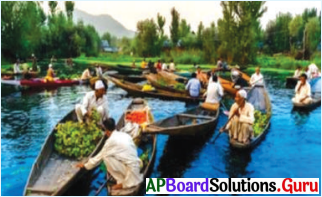
Floating Market in Srinagar, Jammu and Kashmir. In the most picturesque Dal Lake of Srinagar every day from 5 am to 7 am vegetable trade takes place through boats.
These boats are called ‘Shikara’ in local language. Besides vegetables, wood carvings, saffron and other local goods also available on these Shikaras. Tourists of various nations enjoy the shopping in Dal Lake.
7th Class Social Textbook Page No. 79
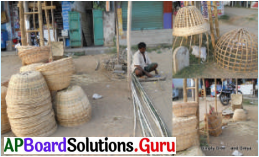
Cottage industry is a production system that relies on producing goods or parts of goods, by craftsmen at home or small workshops, by individuals, small teams or family units instead of large factories.
7th Class Social Textbook Page No. 81
- National Consumer Disputes Redressal Commission (NCDRC) was setup in 1988 under the Consumer Protection Act 1986. Its head office is in New Delhi.
- Consumer help line number : National Toll-Free Number 1800-114000 or 14404.
- Every year 24th December is observed as National Consumer Day in India.



